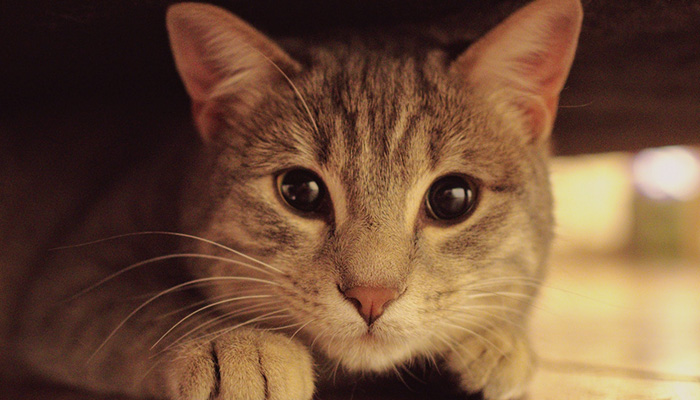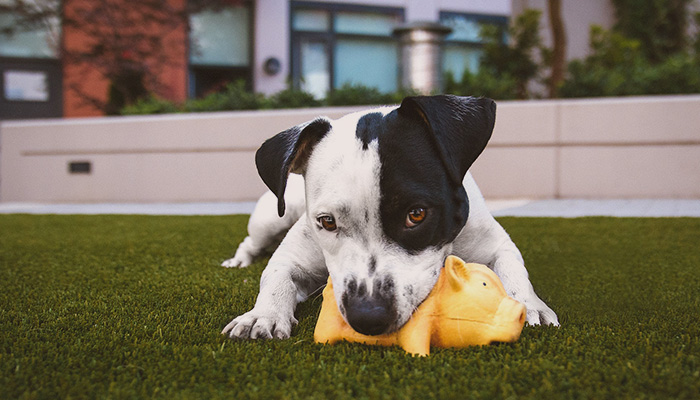Advanced Surgery
Provides Advanced Surgeries for Pets in Dallas, PA
Dr. Anjilla Cooley has been coming to the Back Mountain Veterinary Hospital for the last 10 years to perform orthopedic surgery, such as ACL repair and compound fracture plating, as well as advanced soft tissue surgery and special procedures like Myelograms. Dr.Cooley is available at Back Mountain Veterinary Hospital in Dallas, PA on a weekly basis to address your surgical needs.
Dr. Cooley’s educational background consists of receiving a Doctorate of Veterinary Medicine from the University of Tennessee in 1992. In 1993, a certificate of completion for Small Animal Medicine and Surgery Internship was obtained from the University of Missouri in Columbia, MO. She completed her Small Animal Surgical Residency and obtained a Master’s Degree in Veterinary Science from Virginia-Maryland Regional College of Veterinary Medicine in Blacksburg, VA during the years of 1993 thru 1996.
She also taught as a lecturer at The Cornell University Veterinary Teaching Hospital in Ithaca, NY from 1996 thru 1999. Consequently, she created and implemented a didactic course at Cornell University, which became part of required curriculum.
Her employment tenure includes Round Valley Referral Hospital in Lebanon, NJ from 1999 thru 2001, Valley Central Referral Hospital in Whitehall, PA from 2001 thru 2005, and Crown Veterinary Specialists, in Lebanon NJ from 2005 thru 2011 where she was employed as a staff surgeon. In conjunction, she has traveled throughout Pennsylvania and New Jersey performing numerous advanced orthopedic, neurological and soft tissue surgeries at various hospitals and clinics since 1999.
Appointments are made through Back Mountain Veterinary Hospital by calling 570-675-3406.

The soft tissue and orthopedic cases will be evaluated by Dr. Cooley at the determined appointment time. Once the consultation is performed, if surgery is indicated, the procedure can take place the same day in most cases. Blood work within 1-2 months is required prior to surgery, in addition to well-positioned radiographs of the affected area. If blood work or radiographs have not been performed prior to the scheduled appointment, they can be performed during the day of the consultation.
Once the patient is awake from anesthesia, Dr. Cooley will notify the owners of their pet’s condition and discuss any questions the owners may have moving forward.. A trained technician monitors the patient overnight and provides antibiotics and pain relievers by IV to keep the patient comfortable, Rounds of ice therapy will also be done throughout the night to alleviate any post-op inflammation and/or swelling at the surgical site. All patients are discharged the next day with pain medication and antibiotics as well as detailed discharge instructions and thorough physical therapy plans.
Any pending laboratory or biopsy results are given to the referring veterinarian once they are available so that the veterinarian for that patient can discuss or coordinate adjunct therapy, if that is required. A synopsis of physical findings, surgical description, discharge instructions and suggestion of further treatment options are also forwarded to the pet’s primary veterinarian. In keeping with the integrity, philosophy, and standards of the Back Mountain Veterinary Hospital practice, all non-clients are required to return to their regular veterinarian once the surgical treatment has come to an end.
Orthopedic Procedures
- Amputation
- Angular Limb Correction
- Arthrodesis
- Bone Biopsy
- Cast Application
- Cork screw tail amputation
- Extracapsulary Cruciate Repair
- MPL repair
- TTA Procedure
- Fracture Repair
- Femoral Head Ostectomy
- Head and Neck Procedures
- Hemi/dorsal laminectomies
Soft Tissue Procedures
- Abdominal Exploratory
- Biopsies
- Cherry eye correction
- Cholecystoenterostomy
- Cystotomy
- Enucleation
- GDV w/ Pexy
- Intestinal R&A
- Laryngeal Tie Back
- Mass removal (cutaneous)
- Nephrectomy/otomy
- Perineal Hernia (uni-bi)
- Salivary Mucocele
- Subtotal Colectomy
- TECA/LBO (uni-bi)
- Urethrostomy
- Ventral Bulla Osteotomy
Cranial Cruciate Ligament Rupture
The cruciate ligament is a major part of the canine knee. Cruciate injury is one of the most common orthopedic complications seen in dogs. Sometimes called ACL or CCL tear, a ruptured cruciate is often a painful and immobilizing injury. While not a serious or life-threatening injury, it is still one that must be addressed for the sake of your dog’s mobility. It is important to understand the signs and treatments of this injury, as well as know how to prevent it.Treatment Options
Conservative Management of Cruciate Ligament Rupture:While most dogs with cruciate injuries require surgery, a small number will improve with conservative therapy. This mostly involves several weeks of cage rest, with very brief, calm leash walks for bathroom breaks only. Some vets will place knee braces or only prescribe anti-inflammatory medication, but these methods are most often ineffective. A small percentage of dogs will eventually recover with cage rest, but typically these are dogs that weigh less than 25 or 30 pounds. Even the dogs that do recover can re-injure the knee in the future, or even tear the cruciate ligament on the other knee.
Surgical Repair of Cruciate Ligament Rupture:
The initial part of the surgery is joint “housekeeping”. The remnants of the torn ligament are removed and the joint is inspected for other damage. If damage to the meniscus is found, the torn portion is removed.
Lateral Suture Stabilization/Extracapsular RepairThe preferred method of cruciate ligament repair is surgical. In general, prognosis is good. However, there are different surgical approaches, each with its pros and cons. The traditional surgical procedure is often called the “extracapsular repair.” In this method, the damaged ligament is removed and a very strong suture essentially replaces the function of the cruciate ligament. The tissue of the knee heals over several months and the suture eventually breaks, leaving the healed tissue to stabilize the knee. This is a relatively quick and uncomplicated procedure that can be successful in many dogs, especially medium and small dogs. It is less expensive than other methods, and has been used successfully in veterinary surgery for over 40 years in all sized of dogs and cats, but long-term success is not excellent in large or giant breed dogs.
Aftercare

Some surgeons bandage the affected leg for 24-48 hours, regardless of the method of repair. Activity is restricted to leash walking for a minimum of 6-8 weeks. Supervised rehabilitation of the knee should start within 48 hours and should include a regime of passive range of motion, balance exercises, and walks on leash.
Prescribed medications should be given as directed to control pain and reduce swelling in the stifle joint. The incision needs to be checked for signs of infection daily which include swelling, pain, discharge and redness. A cold compress should be applied to the stifle three times daily, ideally 20 minutes per session for the first 2 days to help reduce the swelling. Metamucil or a stool softener of choice should be added to your pet’s food to ease your pet’s ability to pass stool.
Starting on the third day after surgery, a warm compress is applied to the stifle in order to soften the connective tissues. This should be done 10 minutes per session prior to passive range of motion exercises of the joint. Passive range of motion of the joint involves flexing and extending the stifle joint, and should be done 10 minutes. This therapy should be done until your pet is using the limb well.
Exercise should be limited to short leash walks for two months. During the third and fourth months after surgery, exercise should be gradually be increased to normal. Running, jumping, and rough play are not allowed during the first four months after surgery. Swimming is also an excellent non-weight bearing activity, once the incision is healed.
All therapies should first be cleared through your veterinary surgeon, prior to their implementation. Long term prognosis for animals with repaired CCL is good, with clinical reports of improvement in 85-90% of the cases. Unfortunately, degenerative joint disease or osteoarthritis progresses regardless of treatment. It is expected that 50% of all dogs operated will have some degree of lameness that may be associated with weather changes or heavy activity. Long term outcome includes a decrease in activity over time, an increasing level of disability, an adverse response to cold weather, and stiffness after inactivity related to progressive degenerative joint. Weight loss, joint supplements (glucosamine, chondroitin, hyaluranic acid, and/or MSM) and an exercise regime of daily moderate activity can help to alleviate these clinical signs.
How will I take care of my pet following surgery?
Care of the incision: You should monitor your pet’s incision at least once daily for evidence of infection. Infection generally appears as a painful red swelling associated with the incision. Other incisional problems include separation of the incision line. This ...
Postoperative Care
After surgery is completed, the affected leg(s) may be bandaged for three to seven days. Passive physical therapy is begun immediately after bandage removal to work out the stiffness and reestablish a normal range of motion in the joint. During ...
Exam, Screening Tests, and Imaging
The diagnosis of patellar luxation is essentially based on palpation of an unstable kneecap on orthopedic examination. Additional tests are usually required to diagnose conditions often associated with patellar luxation and help the surgeon recommend the most appropriate treatment for ...
What Options are Available for Treating Patellar Luxation?
Patellar luxations that do not cause any clinical sign should be monitored but do not typically warrant surgical correction, especially in small dogs. Surgery is considered in grades 2 and over. Surgical treatment of patellar luxation is more difficult in ...
Incidence of Patellar Luxation
Patellar luxation is one of the most common congenital anomalies in dogs, diagnosed in 7% of puppies. The condition affects primarily small dogs, especially breeds such as Boston Terrier, Chihuahua, Pomeranian, Miniature Poodle and Yorkshire Terrier. The incidence in large ...
Patellar Luxations
The patella, or kneecap, is a small bone buried in the tendon of the extensor muscles (the quadriceps muscles) of the thigh. The patella normally rides in a femoral groove within the stifle. The patellar tendon attaches on the tibial ...
Complications of Cruciate Surgery
Success Rate Currently the success rate of either surgery is between 85-90%. This means your pet should get back to normal or near normal activity over a 2-4 month period. There are a small percentage of dogs and cats that ...
Summary
- Patellar luxation involves displacement of the knee-cap from its normal position towards the inside of the knee with medial luxation and toward the outside with lateral luxation.
- Small dogs are affected approximately 10 times more often than large breed dogs and females are affected 1.5 times more frequently than males. Patellar luxations are divided into medial (inside) and lateral (outside) categories with four degrees of severity. Grade one luxations are the least severe and grade four luxations are the most severe.
- Dogs with patellar luxation most often have an intermittent non-weight bearing lameness that does not generally appear painful. A definitive diagnosis is made upon physical examination, most often with the aid of radiographs of the entire limb.
- Surgery is recommended for animals with grade 2, 3 or 4 luxation and a history of lameness. Surgery generally involves deepening the distal femoral groove, movement of the tibial tuberosity and manipulation of the tissues that surround the knee cap.
- The prognosis for a complete resolution of lameness following surgery with grade 1, 2 or 3 luxation is excellent. The prognosis for return to normal or near normal function with grade 4 is less predictable.
- Activity restriction following surgery is required for 8 weeks to promote the best chance of a return to normal function and avoid potential surgical complications.
